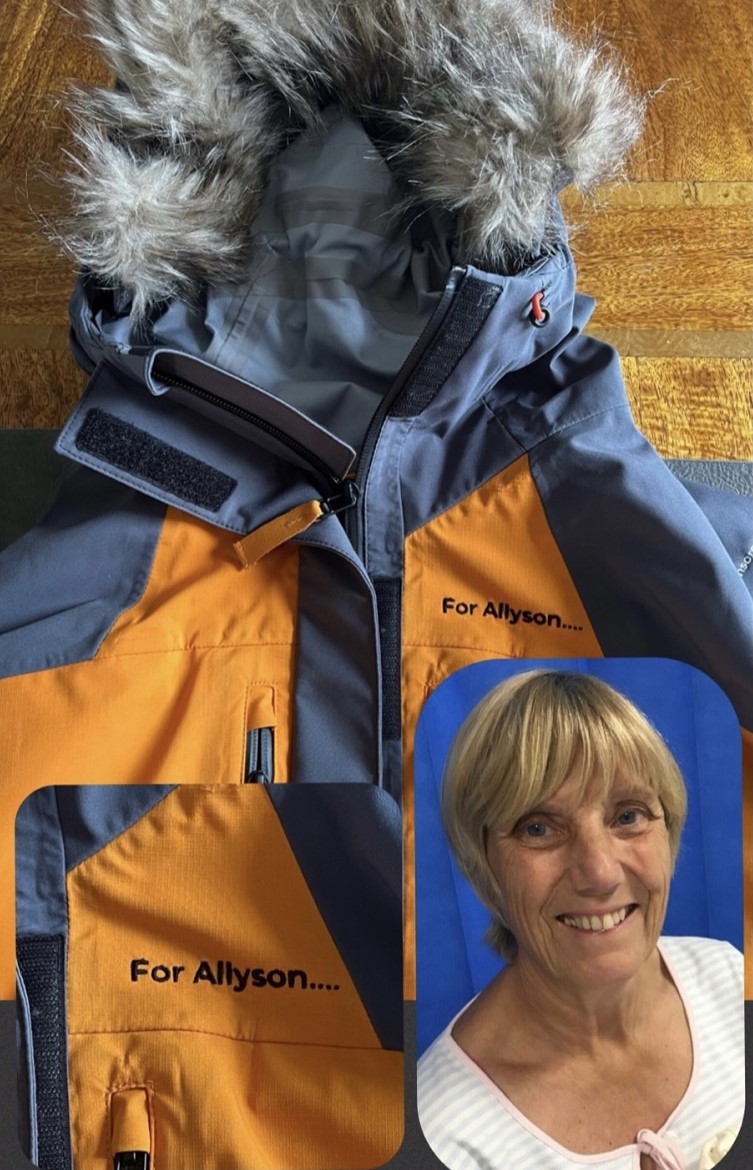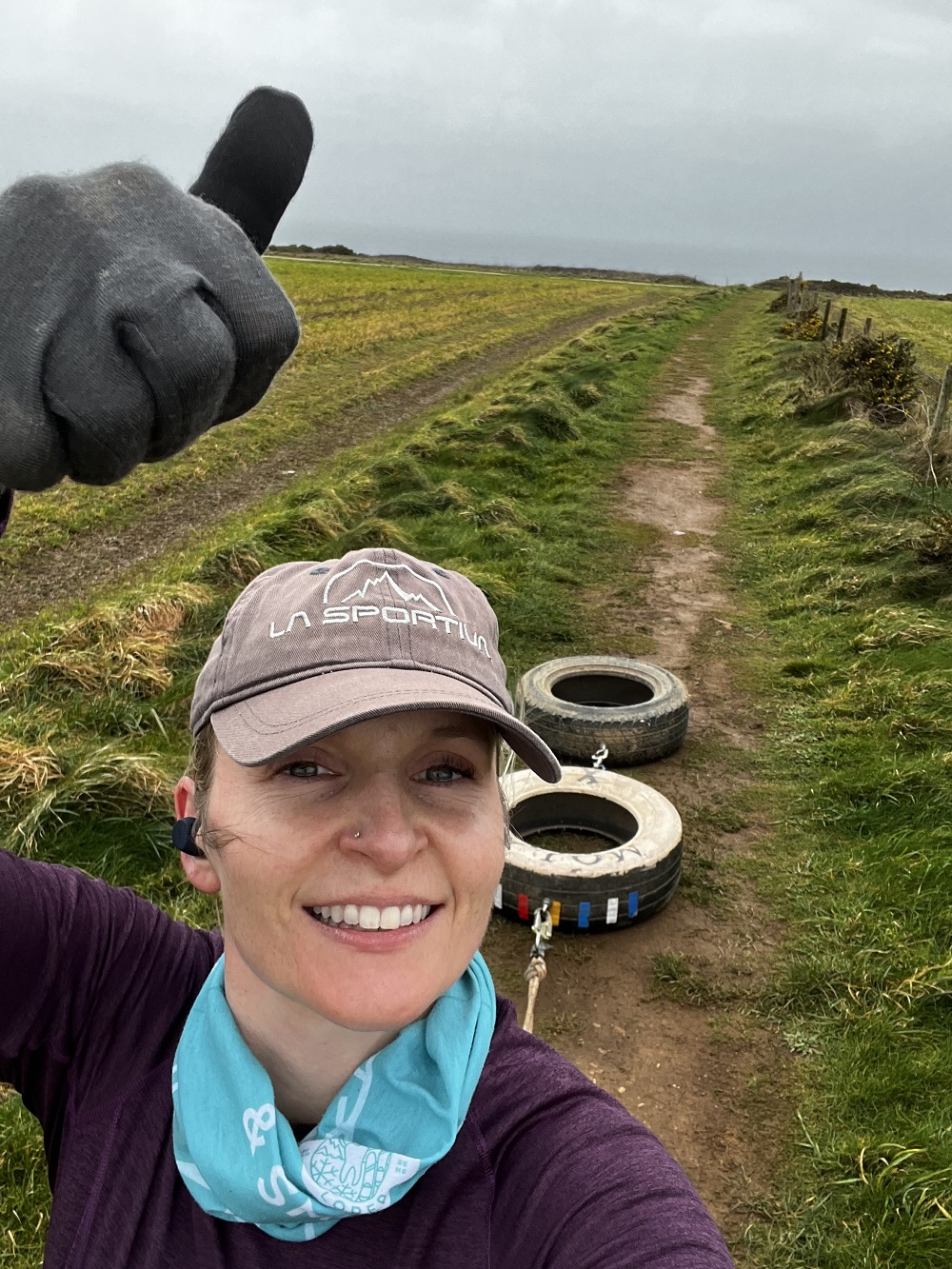You are about to set off on a daring polar expedition – what inspired you to choose Antarctica?
It has always been a dream of mine to combine my love for adventure with my love and respect for the environment. My geography teacher, Allyson Taylor, played a big part in my fascination with Antarctica and the world's ecosystems. Her enthusiasm was contagious, and she brought the subject to life for her students. I wanted to experience them all: rainforest, desert, grasslands, even tundra!
In one lesson, she asked us what we thought was the world’s largest desert. Her answer was timed with the projection of a picture of the vast Antarctic landscape, an incredible image that got me hooked and wanting to learn more.
Afterwards, I leafed through my dad’s National Geographic magazines, and my bookshelf was soon full of the stories of Robert Falcon Scott, Roald Amundsen, and Ernest Shackleton. I was fascinated by how they appeared to have awful experiences in Antarctica yet continued to be drawn back. There was obviously something magical about out there, and I wanted to walk in their footsteps.
In 2020, I think we all took some time to reflect. I turned 40, and knowing it wouldn’t be easy but wanting to seize the moment, I started researching exactly what I needed to do to reach the South Pole.
I then tried to reconnect with my geography teacher (we had sadly lost touch over the years) to let her know how much she had influenced me, so it was upsetting to learn that she had passed away a year earlier. I left a message on her memorial page and was soon contacted by her son. I knew that I wanted Allyson’s name and memory to come with me on my trip, and honour how she’d so inspired me as a child. So, with permission, I had her name embroidered on my expedition jacket. Her family told me she would jump excitedly at what I planned to do.

What will your journey involve?
I will ski for 704 miles from Hercules Inlet, the edge of the Antarctic continent, to the South Pole. My fuel, food, and equipment will be pulled behind me in a pulk. It is a continuous uphill journey, reaching nearly 3,000 metres in elevation. Antarctica is the coldest and windiest continent on earth, with a windchill that can force temperatures to be as low as minus 50 degrees Celsius.
Of course, the time it will take me is dependent on the weather. But I will bring enough food and fuel for 50 days.
The trek is also an opportunity to raise money for charity. Which charities have you selected to support, and why?
Choosing the charities to fundraise for was felt like a surprisingly personal choice. Luckily I had a good deal of knowledge stemming from my voluntary work in the humanitarian sector, and the positive impact I had witnessed in improving access to dental care in remote communities.
I firstly selected Bridge2Aid because of its fantastic work empowering the community. It works with the local dental workforce to provide sustainable training and education programmes.
Community Action Nepal builds and operates health posts in Nepal, delivering sustainable medical, education and livelihood programmes. I met the founder, Doug Scott (the first Briton to climb Mount Everest), shortly after returning from my work in Nepal. He spoke of the dire need for dental training and access in the remote communities in which they worked.
You call yourself ‘The Molar Explorer’. Is there a story behind the name?
I was on the train to Finse, Norway, for my first polar training course. It’s a five-hour journey from Oslo, so there was plenty of time to chat with my new teammates.
When they heard of my South Pole ambitions, they said that I needed to create a name for myself that played on the fact that I’m a dentist. In that split second—it felt as though I didn’t even think—I replied, “You mean, like the Molar Explorer.” Their collective reaction told me everything I needed to know!
What led to your other key passion in life: dentistry?
I feel lucky to have wanted to be a dentist since a summer bike ride when I was 10. One Sunday, I decided I was going to race my sister. Determined to win, I pedalled as fast as I could. At the bottom of the hill, the handlebars veered one way, and I was catapulted straight ahead, landing on my central incisor on the tarmac. Spitting out fragments of a tooth and facing the first day back at school after the summer break, I was mortified.
This visit to the dentist changed everything for me. The ease at which the dentist fixed my smile when I was unaware that this was even possible instantly affected my confidence. Suddenly, I became interested in dentistry as a career.
I work in Cornwall now, an area where patients have difficulty accessing an NHS dentist. The county has been called a ‘dental desert’, and the statistics surrounding hospital general anaesthesia extractions in children are truly shocking.
I think it's time to think outside the box when delivering preventative advice. This expedition has given me a platform to reach far more individuals and, in a fun way, use my expedition to engage all age groups.
I have also worked with Karen Juggins and the ‘Keep Britain Smiling’ campaign to help promote oral health. I would love to have support and collaborate with companies that have a similar vision.

How have you been preparing yourself for the challenging journey ahead?
I signed up for an initial week-long polar skills training course in Finse with Shackleton Challenges. It taught expedition skiing, how to camp on the snow, and how to survive in such a beautiful but hostile environment. I followed that with a mini-expedition to apply the skills I had learned.
Expedition skiing is a full-body workout. The training is different from anything I have done and concentrates on heart rate zones and building endurance rather than high-impact cardio. Also, I am working with a pilates teacher on my alignment to ensure optimal ski technique and reduce the risk of injury.
It is also greatly important not to sweat in Antarctica as there is a very real risk of hypothermia from wet clothing. To best prevent this, I have been training to get maximum output while keeping my heart rate low. It has taken several years of consistent effort, with only one or two rest days a week. My now much improved physical stamina and ability is what gives me the greatest confidence.
In 2023, I completed a full crossing of Greenland, a 39-day expedition, travelling in the footsteps of Fridtjof Nansen's first crossing in 1888. I have taken courses in navigation, crevasse recognition, ropework skills, and endurance and strength training with a specialised coach.
At home in Cornwall, I drag tyres along the coast as it perfectly trains the muscles I will use when pulling my pulk. I have become used to the interest and occasional comments. The length and type of workouts vary, as do the number of tyres I pull, but when I crossed Greenland I couldn’t deny feeling the clear benefit of the hours of training I had put in.
My final piece of essential training is a solo two-week expedition in Norway. I will concentrate on putting everything I have learnt into practice, and hopefully perfecting my routines to preserve as much energy as possible and get maximum rest time. Unlike the final expedition, I hope for some poor weather to test my kit and ability.

During the journey, you plan to conduct scientific research. What are you hoping to investigate?
From the start, I wanted to use this expedition for a greater purpose. Only a handful of women have reached the South Pole solo and unsupported, so I knew it would be a great opportunity to collect research data.
My interest in endurance training led me to read into the science behind it. I was disappointed to discover there is limited research into the effect of endurance and extreme environments on the female body. I learned that training plans and advice are based on research using an average male body. I was concerned that the evidence suggested these plans negatively impact female endurance athletes' health and safety, and have been keen to research further.
While on the ice, I am working with the University of Exeter and Hormonix to track my daily hormone levels (estradiol, progesterone, cortisol +/—testosterone). These levels will be compared to my physical condition and performance, while the results will be used to examine whether endurance exercise affects a female hormone profile/mental health.
If I receive sufficient funding, I will also undergo physiological testing at the Human Metabolism Unit at the University Hospitals Coventry and Warwickshire before and after the expedition. This information gathering will collect data on human metabolism during sustained polar activity. The database will undoubtedly better our understanding of how men and women differ in their adaptation to endurance and the polar environment.
Are there any sights or landmarks you are hoping to see while you are there?
Although the landscape is incredible, there are actually very few landmarks. However, I would love to meet with the resident dentist in Antarctica, who is often the medic with a crash course in teeth!
Getting to look around the research station is a rare and unlikely opportunity… But you never know; someone might need my dental skills in exchange for a tour!
For more information visit https://www.justgiving.com/crowdfunding/TheMolarExplorer-SouthPole?utm_term=7dp3rMkbj
Read part two here https://www.the-dentist.co.uk/content/news/the-key-to-a-successful-journey

